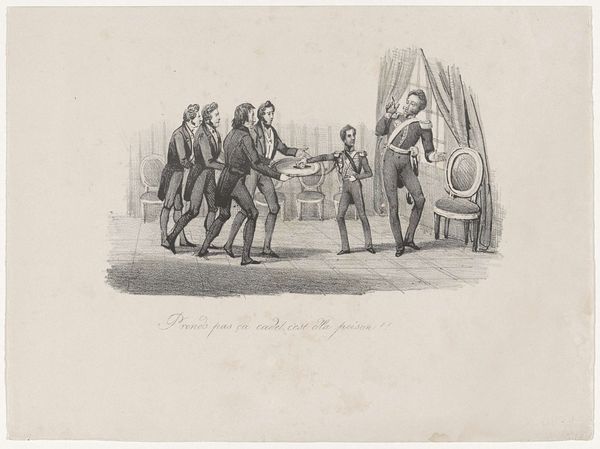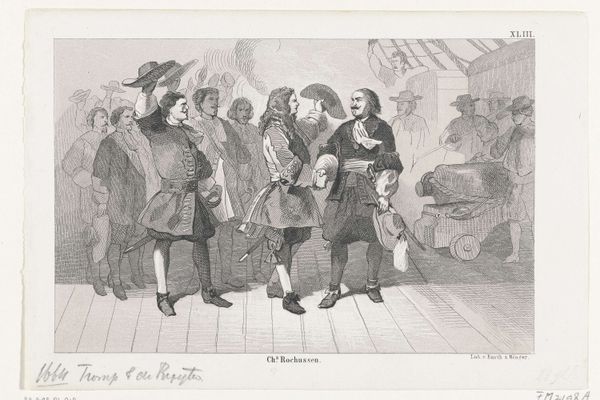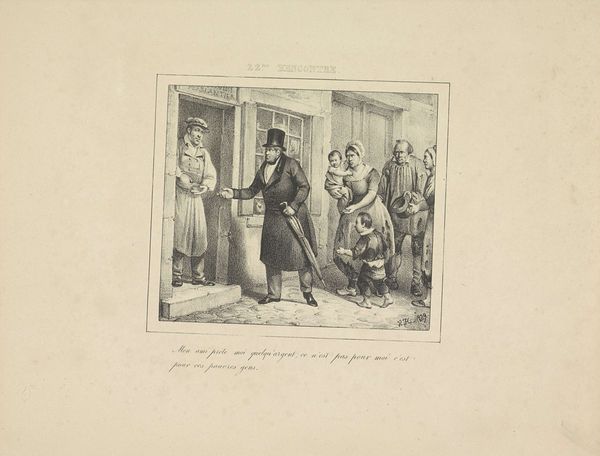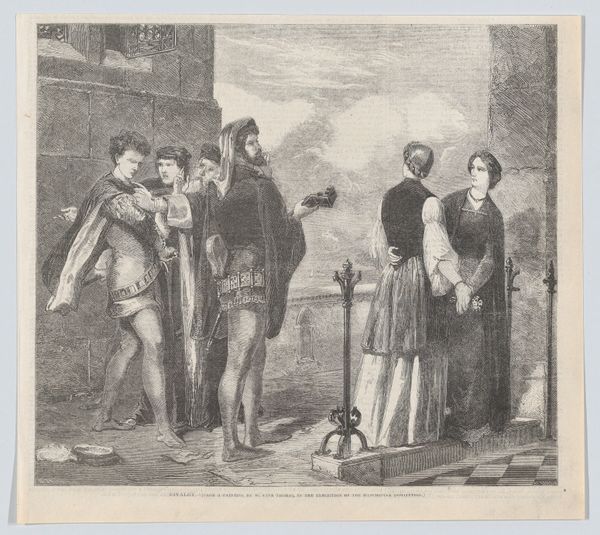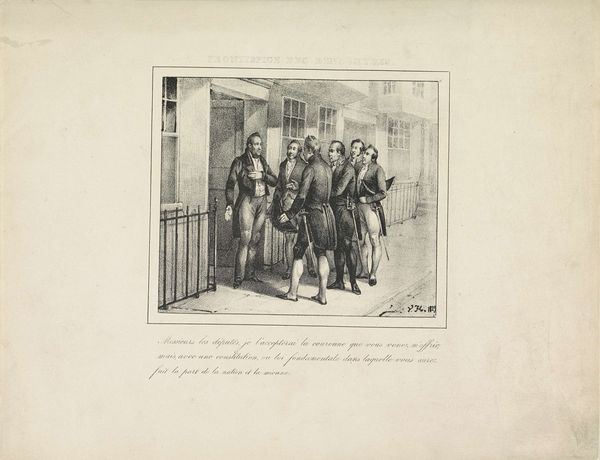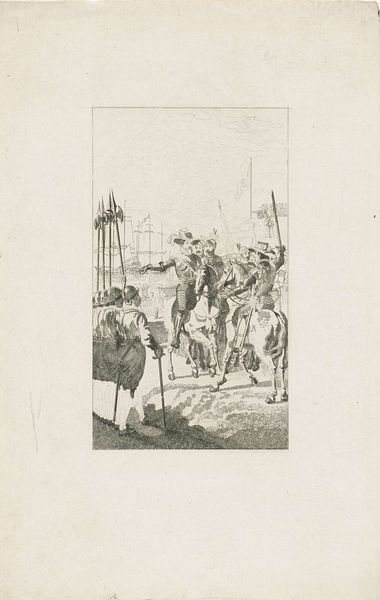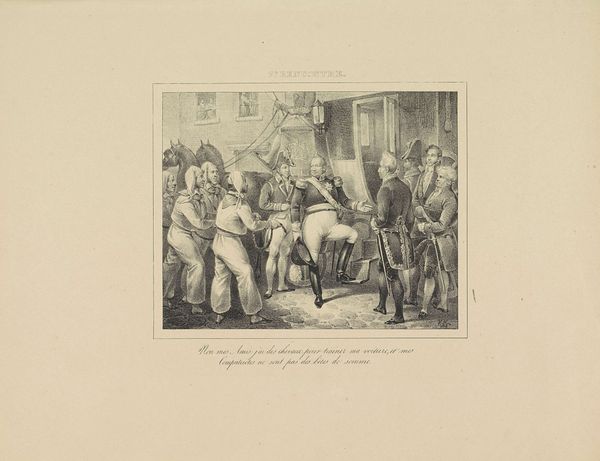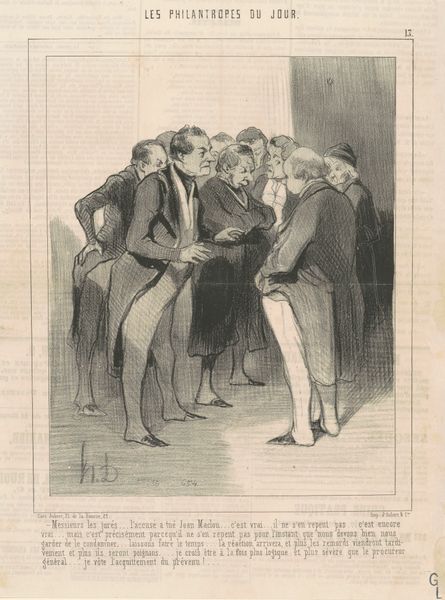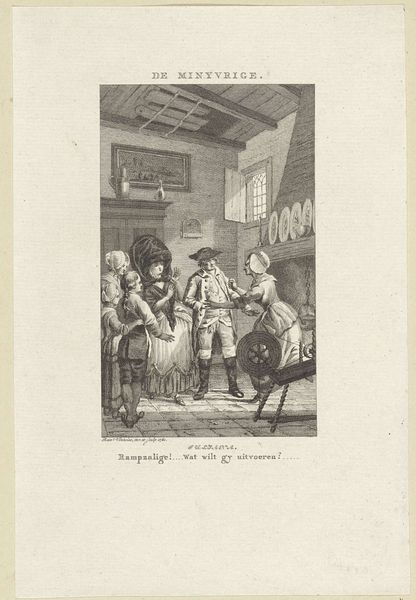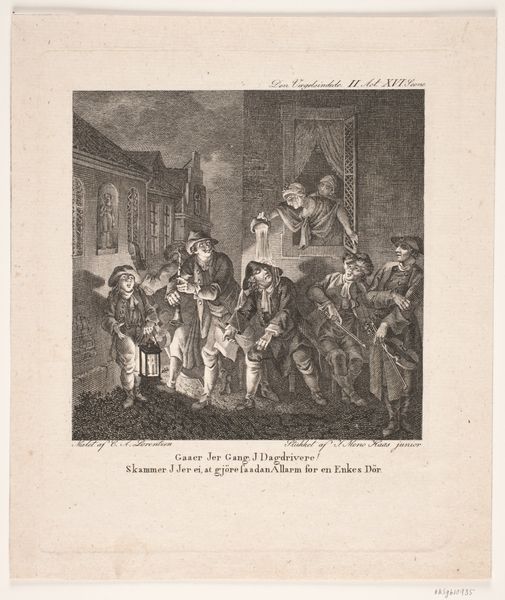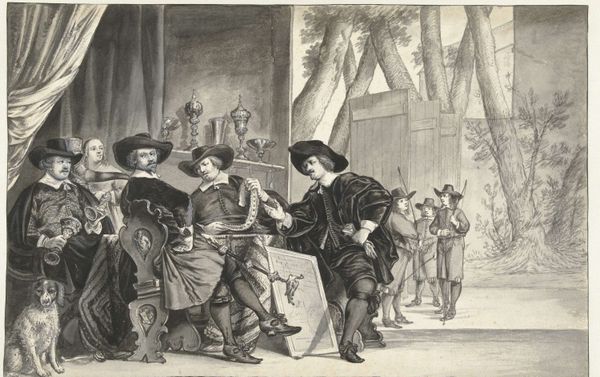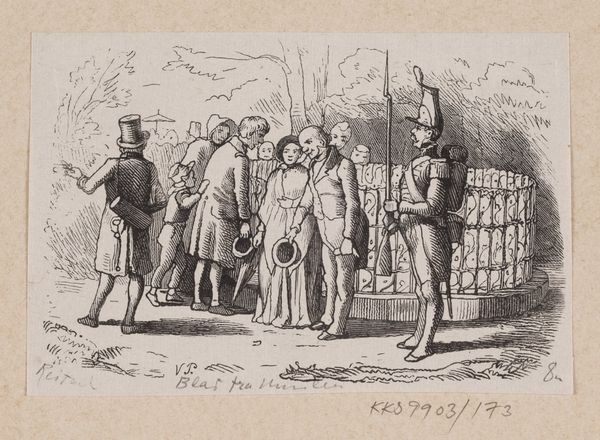
Overgave van De Winter na de verloren zeeslag bij Kamperduin, 1797 1853 - 1861
0:00
0:00
Dimensions: height 159 mm, width 230 mm
Copyright: Rijks Museum: Open Domain
Editor: So, this is an engraving titled "Overgave van De Winter na de verloren zeeslag bij Kamperduin, 1797," dating from 1853-1861, housed in the Rijksmuseum. It depicts a naval surrender, and it feels surprisingly restrained, almost formal. What do you see in this piece beyond just the historical record? Curator: I see a potent visual representation of power dynamics and the construction of national narratives. Consider the moment captured: the Dutch admiral De Winter surrendering his sword after defeat. How does the artist frame this event to shape public perception? Notice the clear distinction in posture and attire between the victors and the vanquished. Who do you think the artist is trying to empower in the image? Editor: Well, clearly the British. They stand tall, looking confident, while De Winter seems… defeated, obviously, but also somewhat dignified. Is it fair to say this is propaganda, then? Curator: It's more complex than simple propaganda. It is creating and reinforcing an idealogical view on who has power. Ask yourself, what does this scene omit? What stories are silenced? Think about the social costs of war, the impact on ordinary citizens, and the narratives of resistance that might exist outside the frame. Is it not an elegy of sorts? How do national identities play a role? Editor: That's a really good point. We only see the officers, the supposed heroes. And the engraving reinforces that hierarchical structure, doesn’t it? Is there something else we might miss if we just focus on the central event? Curator: The context of 19th-century printmaking is key. These images were widely circulated, shaping popular understandings of history. Considering that this print comes decades after the event, who was the intended audience, and what political climate might have influenced its creation and interpretation? Editor: I guess it made the victory seem cleaner and more decisive than it might have been in reality, constructing this sense of British authority in the North Sea. Thanks. That perspective really broadens my understanding. Curator: Indeed, viewing art through a lens of power and representation, and the many untold stories within art, is not simply about the visual aesthetics or the artist's intention but understanding it in relation to the sociopolitical conditions from which they arose.
Comments
No comments
Be the first to comment and join the conversation on the ultimate creative platform.
